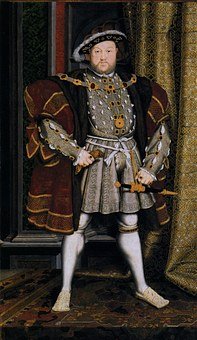When did the title ‘professor’ first start to be used?
Professorship started in medieval Europe. The title ‘professor’ seems to have evolved; it wasn’t a question of people sitting round a table and deciding to create a university post that would be known as a professorship. According to the Oxford English Dictionary (OED), the title ‘professor’ evolved from being a synonym of magister or doctor (denoting someone qualified to teach), to imply distinction within a gradually developing hierarchy of teachers. The OED explains:
‘The right originally possessed by any Master or Doctor to teach publicly in the schools of a Faculty was gradually restricted to an inner circle of teachers, and the term professor came eventually to be confined to the holders of salaried or endowed teaching offices, or to the highest class of these, such titles as reader, lecturer, instructor, tutor, etc., being given to teachers of lower rank’.
 Some of the earliest professorships in England were in fact initially called lectureships or readerships, and only gradually came to be known as professorships. Within the Tudor period (the Tudor dynasty ruled England from 1485 to 1603) the three terms ‘lecturer’, ‘reader’ and ‘professor’ – which, in the 21st century, denote a hierarchy of academic grades – were used indiscriminately. This evolution of titles from lectureships to professorships was accelerated in the 1540s, when the Tudor king of England, Henry VIII, founded five regius professorships (or chairs) in divinity, civil law, medicine, Hebrew and Greek. At this point endowed teachers began more frequently to be referred to as professors. The Oxford English Dictionary explains this:
Some of the earliest professorships in England were in fact initially called lectureships or readerships, and only gradually came to be known as professorships. Within the Tudor period (the Tudor dynasty ruled England from 1485 to 1603) the three terms ‘lecturer’, ‘reader’ and ‘professor’ – which, in the 21st century, denote a hierarchy of academic grades – were used indiscriminately. This evolution of titles from lectureships to professorships was accelerated in the 1540s, when the Tudor king of England, Henry VIII, founded five regius professorships (or chairs) in divinity, civil law, medicine, Hebrew and Greek. At this point endowed teachers began more frequently to be referred to as professors. The Oxford English Dictionary explains this:
‘The application of the title [of professor] to holders of endowed chairs was largely due to the creation of five Regius or King's Professors by Henry VIII (a number increased in later years) … . The endowed teachers of some other subjects were at first called praelectors, but this title was gradually superseded by professor’.
The nomenclature of academic titles that evolved in Scotland was different from in England, where the regenting system of teaching applied. According to the Scottish National Dictionary, a university teacher may have been known as a regent. Pointing out that the term eventually gave way to ‘professor’ in the 18th century, the dictionary explains a regent:
In the four older Scottish Universities: a member of the senior academic staff who took a class of students through the full four year course of instruction in language, physics and philosophy in the Arts curriculum. In the 18th century, this system of teaching was replaced by a professoriate, each professor specialising in his own subject. (http://www.dsl.ac.uk/entry/snd/regent )
The University of Edinburgh website dates the end of the regenting system at the university at 1708, when it occurred within a programme of reforms initiated by William Carstares, who was principal of the university from 1703 to 1715. The website tells us that Carstairs ‘persuaded the Town Council of Edinburgh (16 June 1708) to abolish regenting in favour of a professorial system that assigned each of the subjects on the Master of Arts curriculum to a single teacher. The newly created chairs were offered to existing regents’ (http://ourhistory.is.ed.ac.uk/index.php/End_of_Regenting_System,_1708 ).
Some of Scotland’s notable earliest professors thus began their careers as regents. The term ‘regent’ seems to have been revived and, according to the Scottish National Dictionary, is currently used in the Universities of Aberdeen and St Andrews to denote a student adviser and consultant.
In the UK the terms ‘professorship’ and ‘chair’ are used synonymously. The origin of ‘chair’ to denote professorship is believed to be simply that medieval lecturers delivered their lectures from a seated position.
